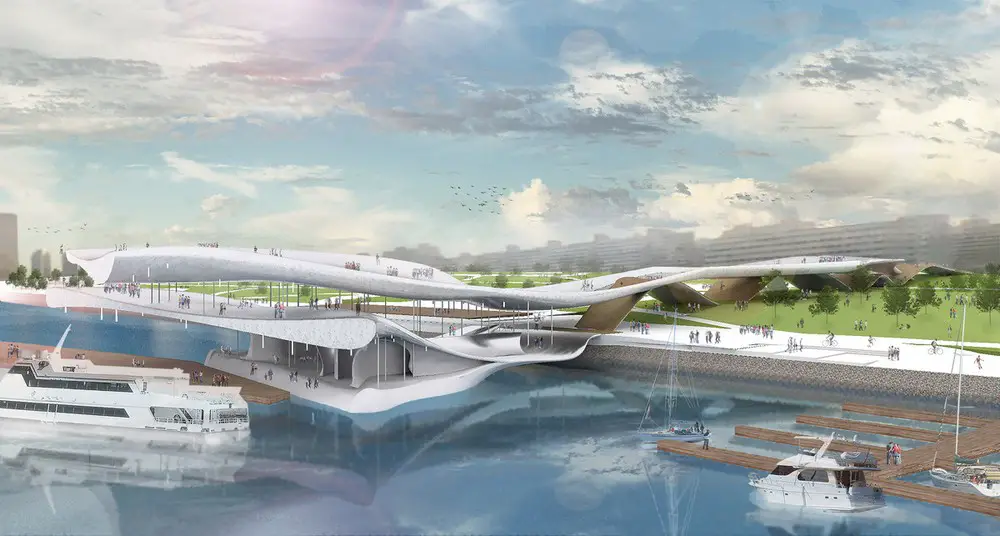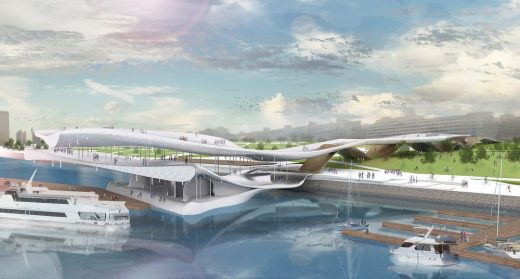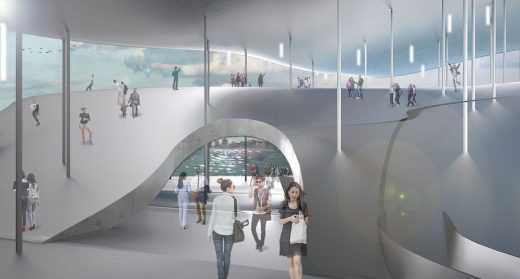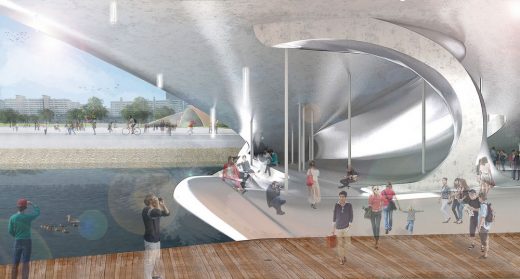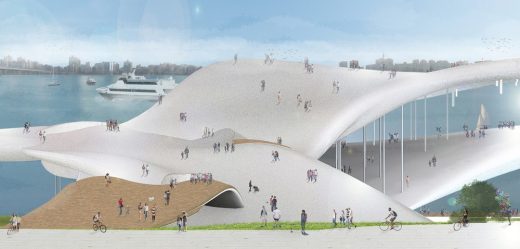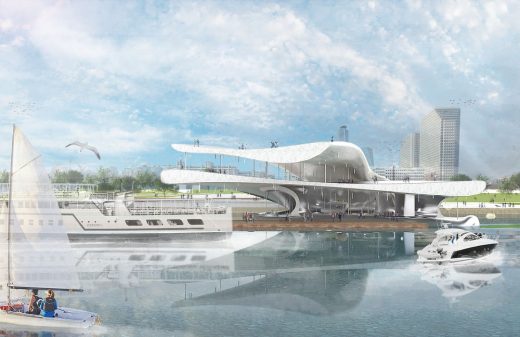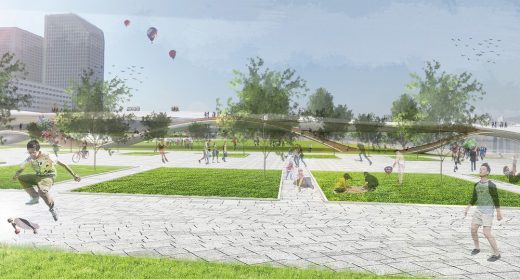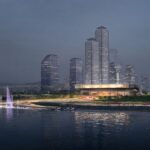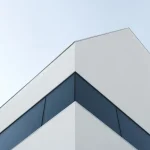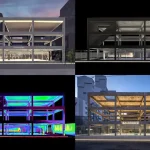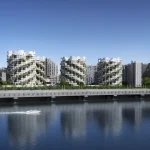Seoul Yeoui-naru Ferry Terminal, South Korean Concept Building, Architecture Development Photos
Seoul Yeoui-naru Ferry Terminal in South Korea
25 Jun, 2021
Design: Sasaki Architecture
Location: Seoul, South Korea
Seoul Yeoui-naru Ferry Terminal
What will the Seoul of tomorrow be made of? What will it make us think about in the endless flow of time? Wars, ideologies, and unimaginable amounts of information come and go through the Han River. All we know is that the flow sculpts our vision.
Our proposal for the Yeoui-Naru Ferry Terminal and its surroundings is a mixture of people and city.
The people, the city, the park, and the river are woven together in a flow that will lead them into the future.
The main goal of our design is to create a central cultural spot by providing a variety of spaces that are not uniform. To induce active transportation and tourism by connecting the city, park and river in a continuous flow. To provide a new perspective on the Han River and the city, creating a focus for the future. To harmonize with the large-scale landscape to dynamically symbolize the spirit of Seoul as it rises toward the future.
Design Overview
Instead of segmented floors, walls, and roofs, we have introduced a “flow.
Flow” attracts people from the city, from riverside parks, from boats, and connects them in a continuous “flow”.
The flows overlap, interweave, appear and disappear, and sometimes different flows overlap each other, creating a hollow or a well of light on top of them. The ever-changing space has a myriad of diverse shapes and sizes.
In our proposal, the flow becomes a floor, a ramp, a staircase, dividing the area, embracing us, suspending us, forming everything. There is no visible boundary between the inside and the outside. The space on either side of a stream, or between streams, takes on different shapes and sizes depending on the activities that take place there. Activities on different streams can be seen on each other.
Where the two streams meet and connect different areas, a void is placed. These voids will be light wells where diverse people can meet and gather. The possibilities for activities to take place under, in, and around these spaces are endless. You can enjoy picnics, run dogs, fly kites, play outdoor sports, talk, sing, dance, draw, carve, sell things, show your products, maybe even have a K-Pop festival or fashion show. Here, non-uniformity and diversity can give you the first step to a new culture.
Program and Circulation
– The river as an open space
The city, the park, and the Han River have been separated by distinctive straight lines. We are proposing to connect these three elements with a continuous flow. This will provide easy access to the water surface and integrate it as part of the city’s open space.
The smooth flow, free of obstacles, is open to all pedestrians, including the elderly and disabled.
– Welcoming All and Mixing People
The starting point of the bridge is an ideal meeting point, halfway between subway exits, bus stops, and public parking lots. In order not to divide the street and the park, the access to the bridge is arranged in such a way that people from both sides can mix. All the streets are in a continuous flow towards the river, mixing with each other and splitting many times. In this way, one can discover a variety of landscapes and activities.
– One big space
The flow also delineates the boundaries between public, ticketed, and restricted areas. Individual rooms are loosely defined by the density of their columns. The overall space accommodates and unifies people engaged in a variety of activities.
– Enhancing the Park
This flow enhances the central plaza of the park by carefully preserving the existing promenade and seamlessly connecting the event spaces under the largest arch.
For safety reasons, emergency transportation was also provided separately from the main facility.
Transportation from the embankment to the pier can be done directly using a simple foldable bridge located right next to the facility. The direct access to the entrance hall is also wide open to the park, allowing for future amphibious bus transfer circulation.
Ingenious view of the view
The main focus is on the past, present and future of Seoul, in other words, where the river comes from, Namsan on the other side of the river, and where the river flows to. Also, by changing the height and directing the flow to various angles, the facility offers many unique views. As you ascend and descend on the bridge and reach the climax, you can enjoy a series of ever-changing and unique views over the energetic city. In addition, by positioning the main facility slightly off the axis of the existing park, the current breathtaking panoramic view from the street over the river has been maintained.
Seoul Yeoui-naru Ferry Terminal in Korea – Building Information
Lead Architect: Ryuichi Sasaki/Sasaki Architecture
Design Team: Gen Sakaguchi, Anna Kwapien/Sasaki Architecture
Status: Competition
Client: City of Seoul, South Korea
Location: Seoul, South Korea
Area: 5,000.00m2
Date: 2017
Building levels: 3
Images: Ryuichi Sasaki / Sasaki Architecture
Seoul Yeoui-naru Ferry Terminal, South Korea images / information received 250621
Location: Seoul, South Korea, East Asia
South Korea Architecture Designs
Contemporary South Korean Architectural Selection
South Korean Architecture Designs – chronological list
Design: OMA
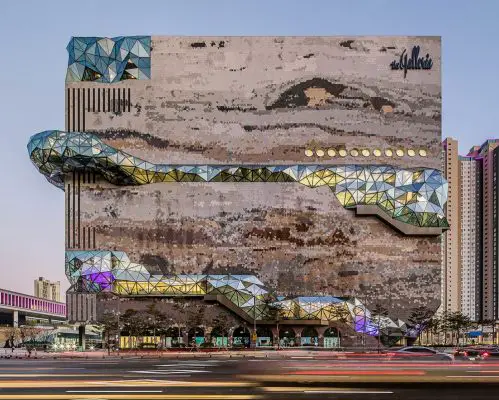
Photography by Hong Sung Jun, courtesy of OMA
Galleria Department Store in Gwanggyo
Design: Foster + Partners, UK
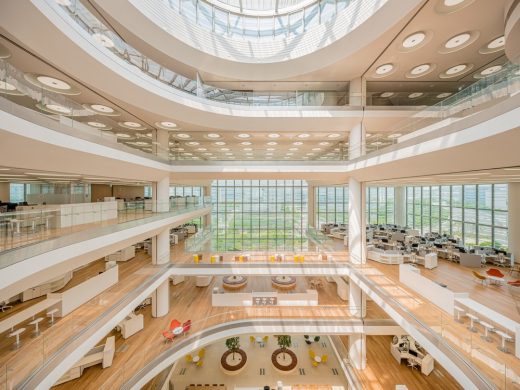
photo : TIME OF BLUE
Hankook Technoplex in Pangyo
Design: ATELIER BRÜCKNER
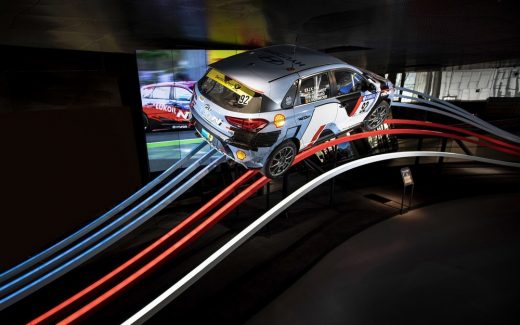
image courtesy of architects office
Hyundai Motorstudio in Goyang Korea
Architects: ATELIER BRÜCKNER
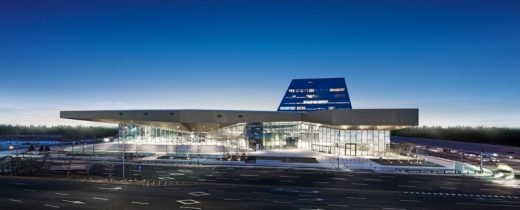
image from architecture office
Hyundai Motorstudio in Goyang
South Korean Architecture News
Comments / photos for the Seoul Yeoui-naru Ferry Terminal, South Korea page welcome

